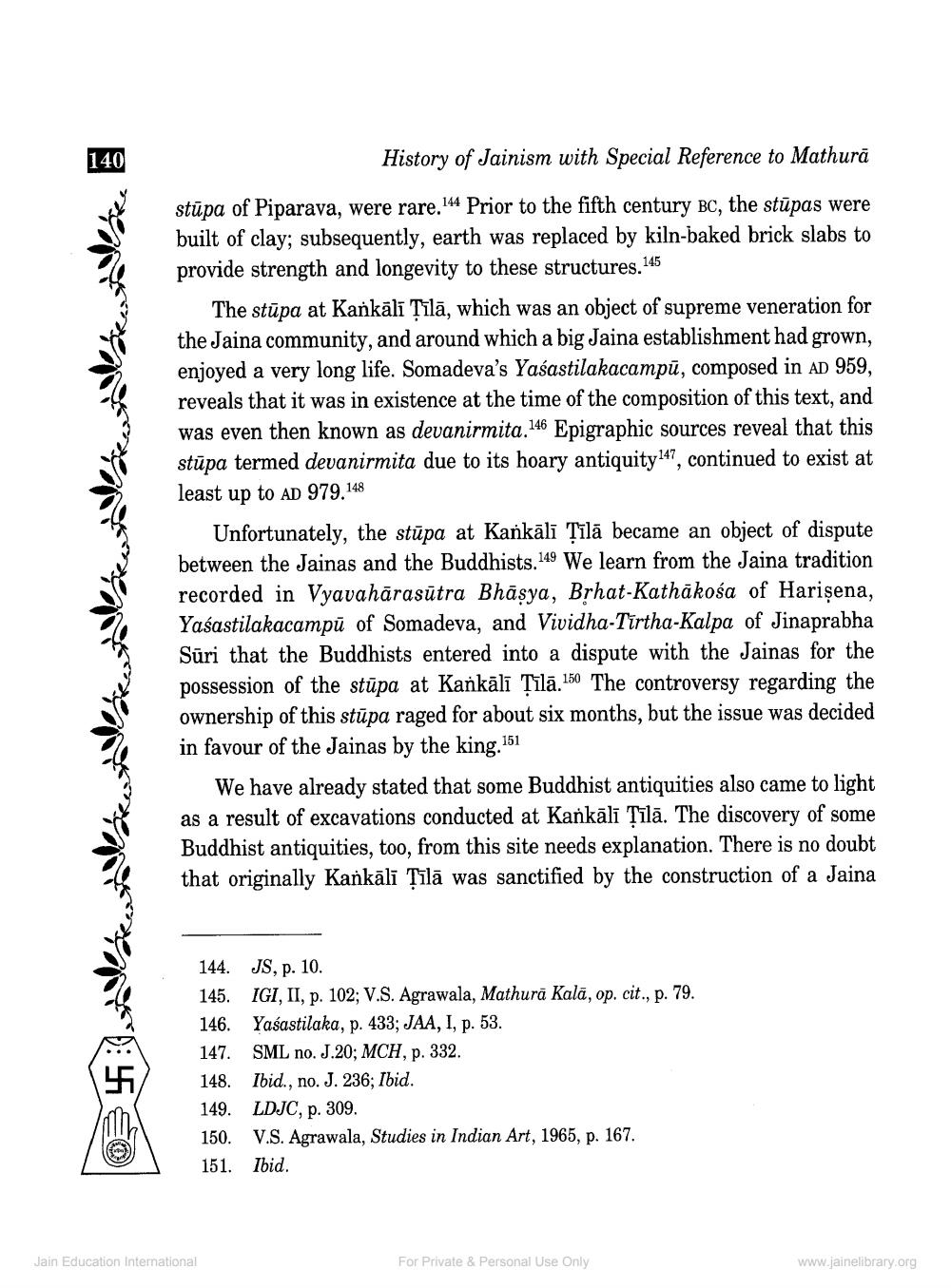________________
140
History of Jainism with Special Reference to Mathurā
stūpa of Piparava, were rare.144 Prior to the fifth century BC, the stūpas were built of clay; subsequently, earth was replaced by kiln-baked brick slabs to provide strength and longevity to these structures.145
The stūpa at Kankālī Tīlā, which was an object of supreme veneration for the Jaina community, and around which a big Jaina establishment had grown, enjoyed a very long life. Somadeva's Yaśastilakacampū, composed in AD 959, reveals that it was in existence at the time of the composition of this text, and was even then known as devanirmita.146 Epigraphic sources reveal that this stūpa termed devanirmita due to its hoary antiquity 147, continued to exist at least up to AD 979.148
Unfortunately, the stūpa at Kankālī Tīlā became an object of dispute between the Jainas and the Buddhists. 149 We learn from the Jaina tradition recorded in Vyavahārasūtra Bhāsya, Brhat-Kathākośa of Harisena, Yaśastilakacampū of Somadeva, and Vividha-Tirtha-Kalpa of Jinaprabha Sūri that the Buddhists entered into a dispute with the Jainas for the possession of the stūpa at Kankālī Tīlā.150 The controversy regarding the ownership of this stūpa raged for about six months, but the issue was decided in favour of the Jainas by the king. 161
We have already stated that some Buddhist antiquities also came to light as a result of excavations conducted at Kankālī Tīlā. The discovery of some Buddhist antiquities, too, from this site needs explanation. There is no doubt that originally Kankāli Tīlā was sanctified by the construction of a Jaina
144. JS, p. 10. 145. IGI, II, p. 102; V.S. Agrawala, Mathurā Kalā, op. cit., p. 79. 146. Yaśastilaka, p. 433; JAA, I, p. 53. 147. SML no. J.20; MCH, p. 332. 148. Ibid., no. J. 236; Ibid. 149. LDJC, p. 309. 150. V.S. Agrawala, Studies in Indian Art, 1965, p. 167. 151. Ibid.
Jain Education International
For Private & Personal Use Only
www.jainelibrary.org




